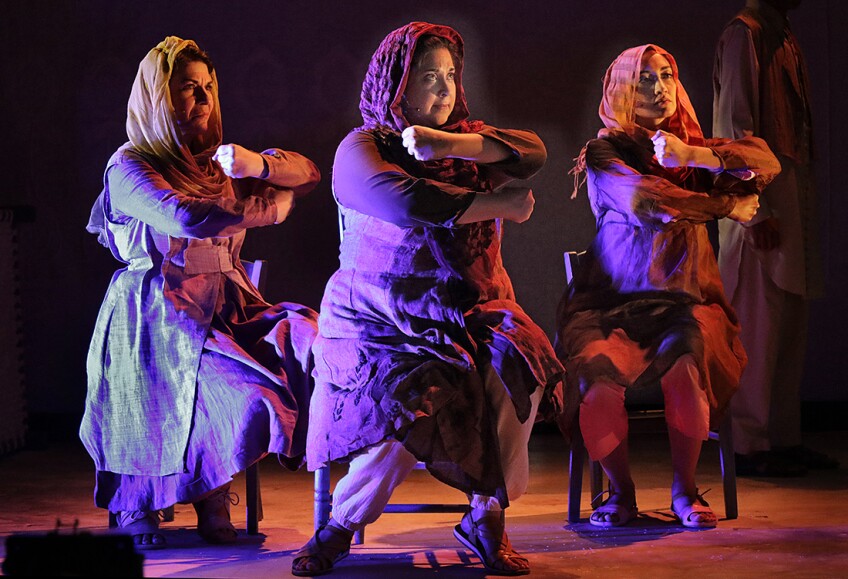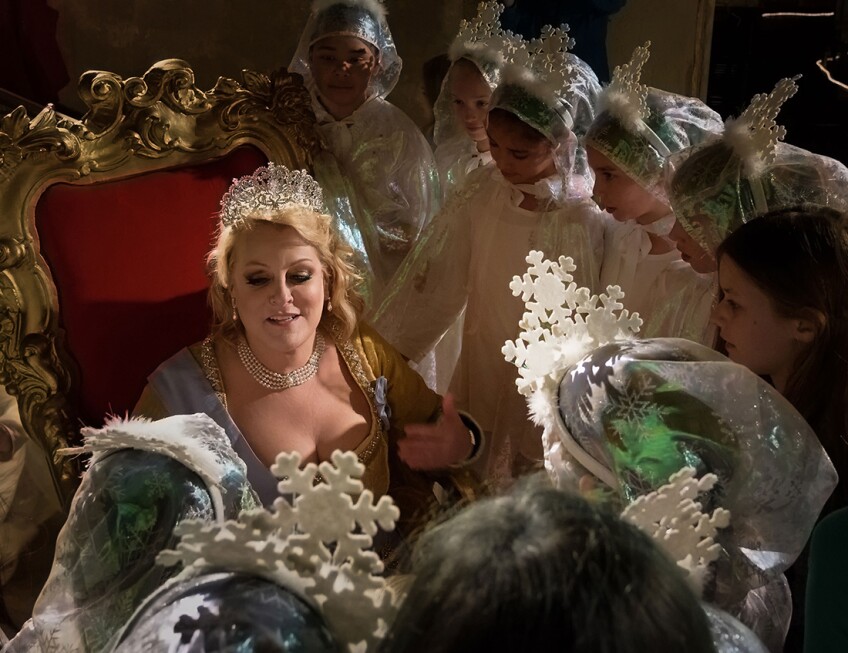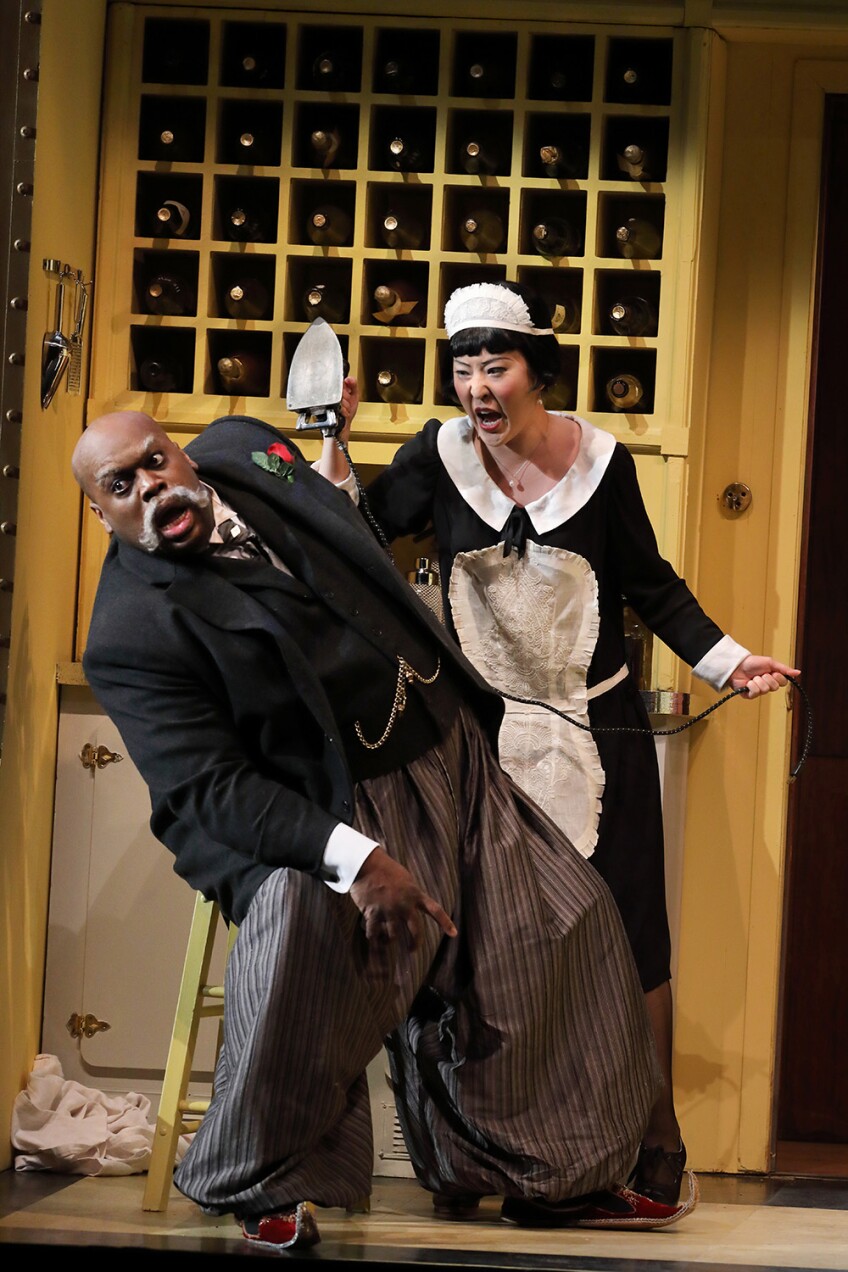Four Inspiring Arias to Add to Your Girl Power Playlist

Vireo, the groundbreaking made-for-TV opera, is now available for streaming. Watch the 12 full episodes and dive into the world of Vireo through librettos, essays and production notes. Find more bonus content on KCET.org and LinkTV.org.
Since the very beginning, there have been opera heroines who are the very definition of girl power. They’re independent, go against societal norms, and even empower others to stand up for what they believe in and change the world.
What do these women all have in common?
Killer arias that are as empowering and awe-inspiring as your favorite Beyoncé, Alicia Keys, and Katy Perry songs.
Here are some arias to add to your girl power playlist:
1. “Habanera” – "Carmen" by Georges Bizet (which returns to LA Opera on September 9)
There’s a reason “Habanera” is one of the most recognizable arias in opera. Yes, it’s catchy. But it’s also empowering. In the aria, Carmen tells a crowd of would-be suitors that she’s only interested in love when it’s strictly on her own terms. Good or bad, Carmen takes responsibility for her life and who she chooses to love, not letting a man control her. Listen to “Habanera” here.
2. Mukhtar Mai’s aria in "Thumbprint"
Mukhtar Mai is an inspiring woman. As a young woman, her world is shattered by an act of brutality that could have destroyed her. Instead, she discovers a weapon—her voice—and against all odds, brings her perpetrators to justice.
In a climactic aria that blends Indian classical music with opera, Mai laments that she never learned to write and neither did her mothers and sisters. They can only sign documents with a thumbprint. “I cannot read, I cannot write; I know nothing of the world,” she begins. By the end of the aria, Mai has triumphantly decided to use the money awarded to her after her court case to create a better world for women and girls. “I want a school, a school for girls. Girls will learn to read and write; girls will learn to sing their names with a pen and not a thumbprint.”
(This opera hasn't been recorded yet, but you can see it performed live by purchasing tickets to "Thumbprint" here.)

3. The Queen’s aria – "Vireo: The Spiritual Biography of a Witch’s Accuser" by Lisa Bielawa
"Vireo," which premiered on KCET on May 31, is already making waves as the first episodic made-for-TV-and-online opera. The opera follows teenage Vireo, as she encounters witch-hunters, early psychiatrists, and the modern artists that try to define her genius.
In the penultimate episode, Vireo is presented to a medical convention in Sweden that is designed like a circus and meets the court of the King and Queen of Sweden. The Queen of Sweden – played by soprano Deborah Voigt – asserts her position in an aria too gorgeous to be missed. Watch here.

4. “Durch Zärtlichkeit und Schmeicheln” – Blondchen’s aria – "The Abduction from the Seraglio" by Mozart
In Mozart’s comedic opera, "The Abduction from the Seraglio," Spanish noblewoman Constanze and her maid Blonde are held captive in the seraglio of notorious Ottoman royal Pasha Selim. The Pasha’s servant Osmin makes advances on Blonde, but she stands firm. Blonde tells Osmin that he can’t bully her into submission and that a little sweetness goes along way with her. (You go girl!) Listen to Blondchen’s aria here.

Top Image: Ana María Martínez as the title character in “Carmen” I Lynn Lane | Courtesy of Houston Grand Opera





